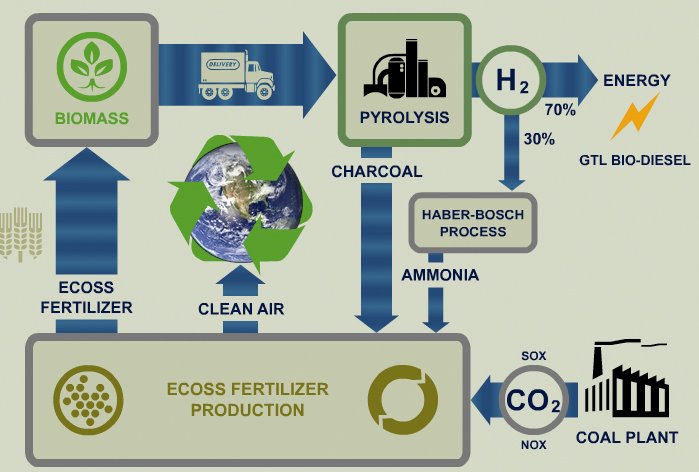Bioconversion
As bioconversion ( altgr. βίος bios "life" and Latin conversio " turning around ", " reverse " ) refers to the conversion of most organic compounds ( biomass), usable in energy or material products. The conversion is carried out by organisms, usually microorganisms, or isolated enzymes or enzyme systems ( metabolic pathways). There are mainly applied biotechnological processes such as fermentation (biogas production, Industrial Biotechnology ) and the enzymatic conversion. Also in applications that are not or not unique to the biotechnology, Biokonversation occurs, such as in the baking of bread or the sauerkraut production (ethanol and lactic acid fermentation).
Occasionally, the term bioconversion is used as a synonym for biocatalysis and biotransformation. But partly also takes a distinction in the bioconversion is classified as part of the field of biocatalysis.
Biochemistry
At a Biokonversation a chemical reaction takes place that is catalyzed by the isolated or present in the organisms used in each enzyme. There can be different types of Biokonversation classify that differ by the principle after the product of interest is formed.
Metabolic waste
The first applications of bioconversion by the people already took place thousands of years ago. So already the ethanol fermentation of beer and wine making and the lactic acid fermentation, for example, for the preservation of milk by acidification ( yogurt, kefir) was early used. In these applications, micro-organisms ( yeasts, bacteria ) are used to implement the organic compounds ( mainly sugar), especially for the provision of energy ( catabolism). Since this reaction takes place under anaerobic ( oxygen-free ) conditions or by anaerobic organisms, there is no full implementation of the organic compounds (primarily to CO2 and H2O), but to organic compounds such as ethanol (alcohol) and lactic acid.
Not only in the food industry, but also for the material and energy use, eg as raw material for Biokunststoffherstellung (polylactide from lactic acid ) or biofuels (eg, so-called bio-ethanol than gasoline substitute or admixture ) is a Biokonversation so-called renewable resources instead.
Many other products are obtained according to this principle:
- Acetone
- Propanediols: 1,2-propanediol and 1,3-propanediol
- Carboxylic acids such as acetic acid ( acetate), succinic acid ( succinate ) and lactic acid (lactate )
- Biogas
Metabolites
For organic compounds or certain inorganic compounds heterotrophic or autotrophic beings can synthesize compounds that serve as building material for the cell ( anabolism). This synthesis is a form of power Biokonversation used for various purposes. Examples include the production of antibiotics such as penicillin and Penicillium chrysogenum, lysine and glutamic acid ( amino acid ) with the bacterium Corynebacterium glutamicum or the peptide of insulin in the bacterium Escherichia coli.
The synthesis of compounds such as penicillin is energy- consuming, which is why they are produced by the organisms only in small quantities. Through breeding and selection, and the selection of certain conditions of cultivation, the yield can be significantly increased. Other alternatives include changes in metabolic pathways ( metabolic engineering ) or the introduction of new metabolic pathways from other organisms by genetic engineering. For the preparation of insulin, for example the human gene was transferred into the bacteria.
The preparation is usually done under sterile conditions in a fermenter, since impurities could interfere with the process. In addition, pharmaceutical products such as insulin requiring high purity.
Metabolic performance
Metabolic activities of organisms can be used to reduce toxic or odorous compounds such as water or waste water polluting substances, such as nitrogen compounds to bind. This method is used eg in contaminated soil in the treatment of exhaust air in biofilters or the fixing of nitrogen dissolved in the water and phosphorus compounds during treatment in a sewage treatment plant.
Products isolated enzymes
Isolated enzymes and enzyme systems capable of catalyzing certain reactions. For example, the Lab - a mixture of different enzymes - extracted from calf stomachs and used in cheese production. In the manufacture of leather, various enzymes can play a role. In laundry detergents are among other fat -and protein- degrading enzymes before ( lipases and proteases).
Classification by Application
In biotechnology, as a rule there is no classification according to the principle of bioconversion but according to the application. Thus, in white biotechnology, also known as industrial biotechnology, applied all these principles. Then there are the Red biotechnology ( Medical Biotechnology ) and the Green Biotechnology ( Plant Biotechnology ). Further, far less clearly defined biotechnologies are the gray biotechnology and blue biotechnology. Other colors ( brown and yellow biotechnology) are sometimes used, but are not clearly assigned. On Biotechnology bioconversions addition can also further include applications in which chemical reactions also take place. The reaction and the product produced, however, not be in the foreground, such as in diagnostic methods red biotechnology.
Importance
The bioconversion plays an important role in many industrial processes. It enables the production of compounds which are not synthesized by other methods. In the chemical industry chemical methods are converted to bioconversion ( biochemical process ) occasionally, as this often requires less extreme conditions and thus energy and chemicals can be saved. With the utilization of renewable raw materials traditional and new methods are used. Large amounts of ethanol can be produced from sugar and starch.
With new methods of bioconversion not been usable as fuel shares of biomass, such as lignocellulosic straw and wood, as cellulosic ethanol or cellulosic butanol are to be developed. Another approach is the synthesis gas fermentation converted in biomass a biomass gasification to synthesis gas and then converted in a fermentation into useful alcohols and other chemicals. Since cellulose accounts for a large share of biomass, it has a large, previously untapped potential for the provision of energy and raw materials.









